By Matt
I watched a bunch of YouTube videos on how to construct your own beehive parts and accessories, especially ones on building medium and deep supers and swarm traps. I came across a different type of hive in my research called a horizontal hive. Instead of stacking boxes vertically as the hive and honey storage grows, a horizontal hive starts with a horizontal rectangular box that is fully sized with a single layer of deep frames and you just partition it. As the hive grows you slide a divider and give them access to new frames. The benefit to this design are several fold. 1) You have access to the entire hive without having to take it apart 2) The hive never has to be lifted so you can build it with thicker walls increasing the insulative properties of the hive. 3) The hive can be partitioned and you can have more than one colony in a single hive.
These hives are popular in eastern Europe and Russia and are advocated for in America by Dr. Leo Sharashkin who has written several books on the subject and is the founder of HorizontalHive.com. HorizontalHive.com has several construction plans for horizontal hives and swarm traps at no charge. So I got some construction materials and sawed, mitered and pocket screwed my own horizontal hive in which this years 2lb package of bees were installed. Here is the result.
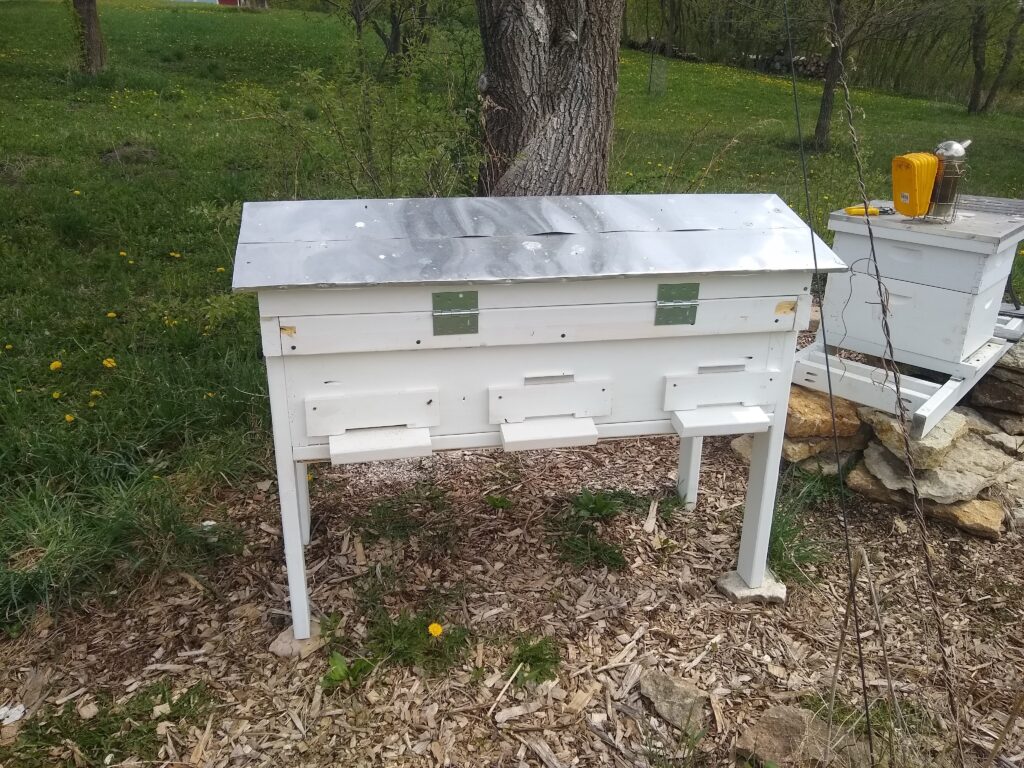
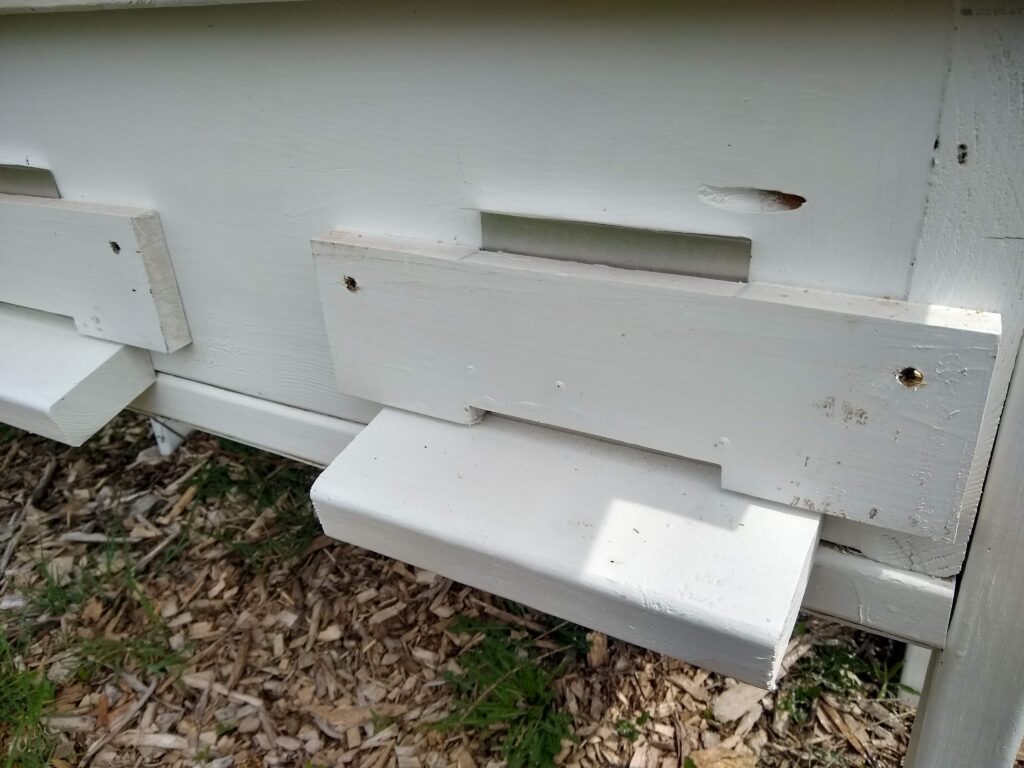
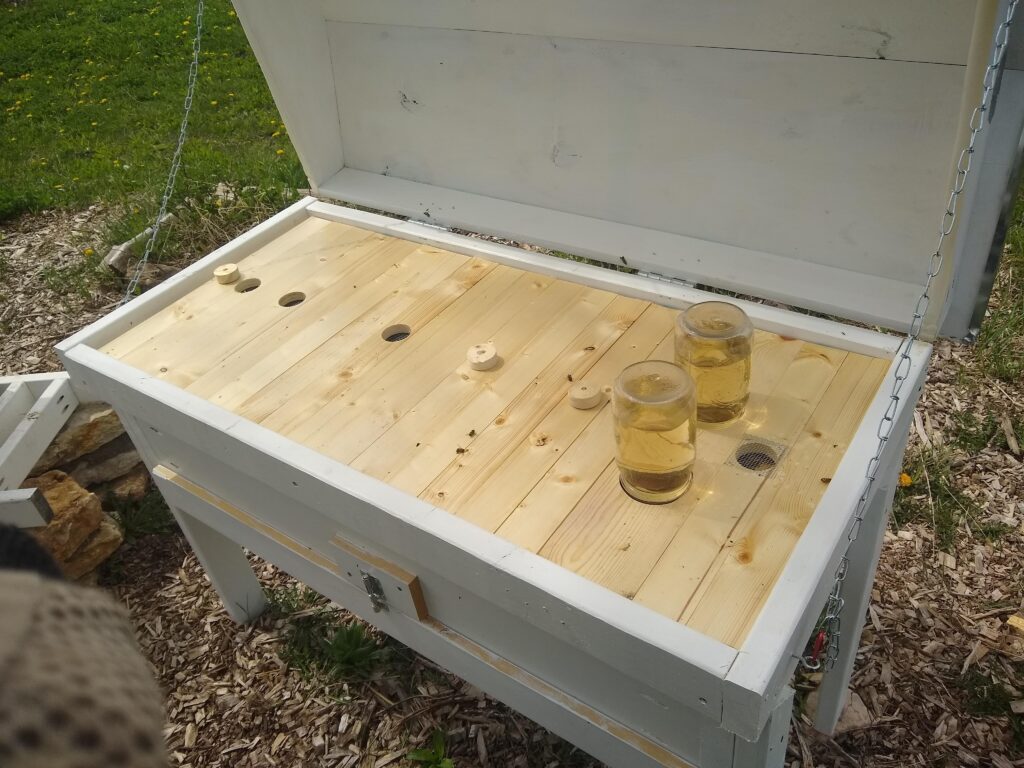
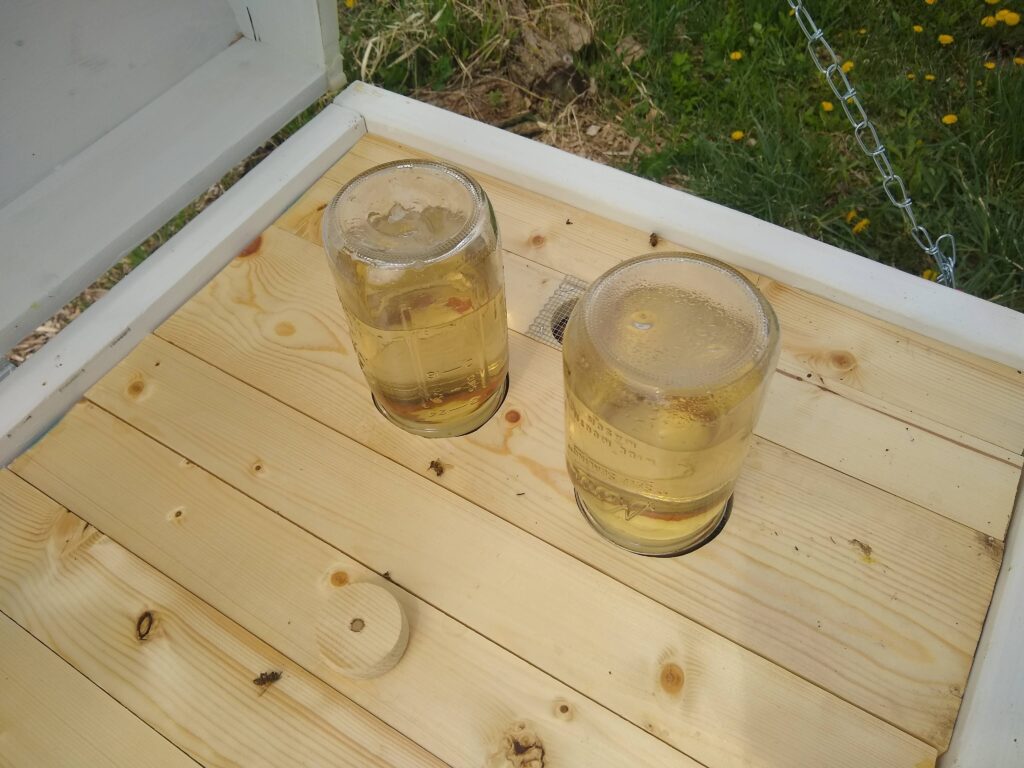
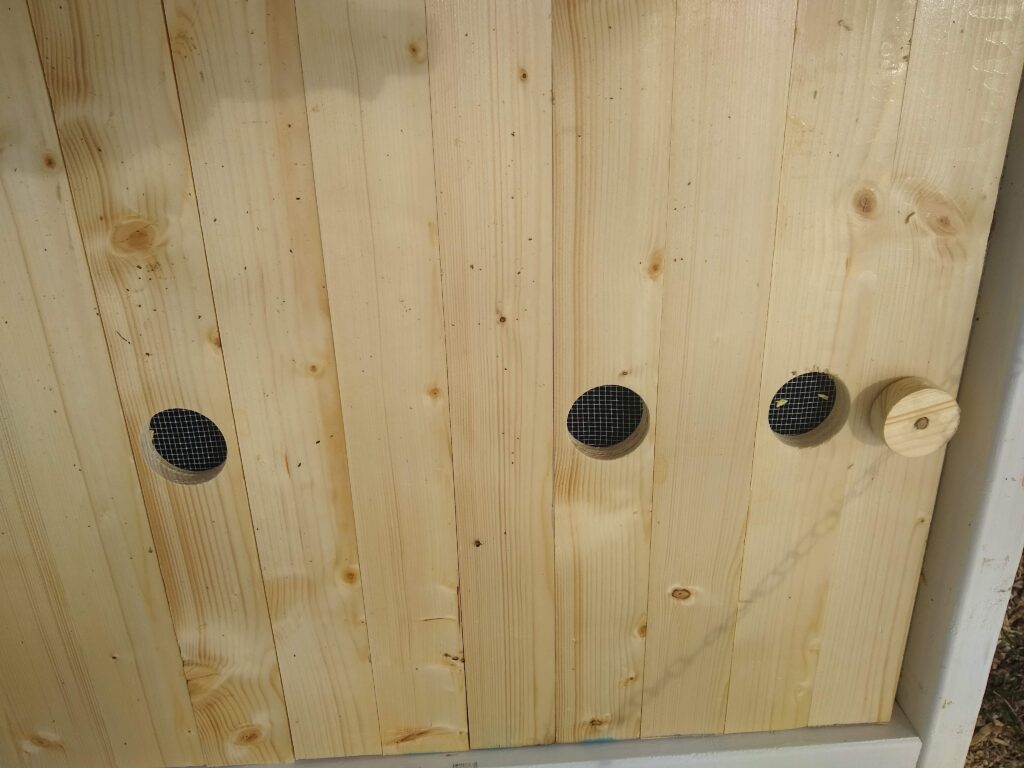
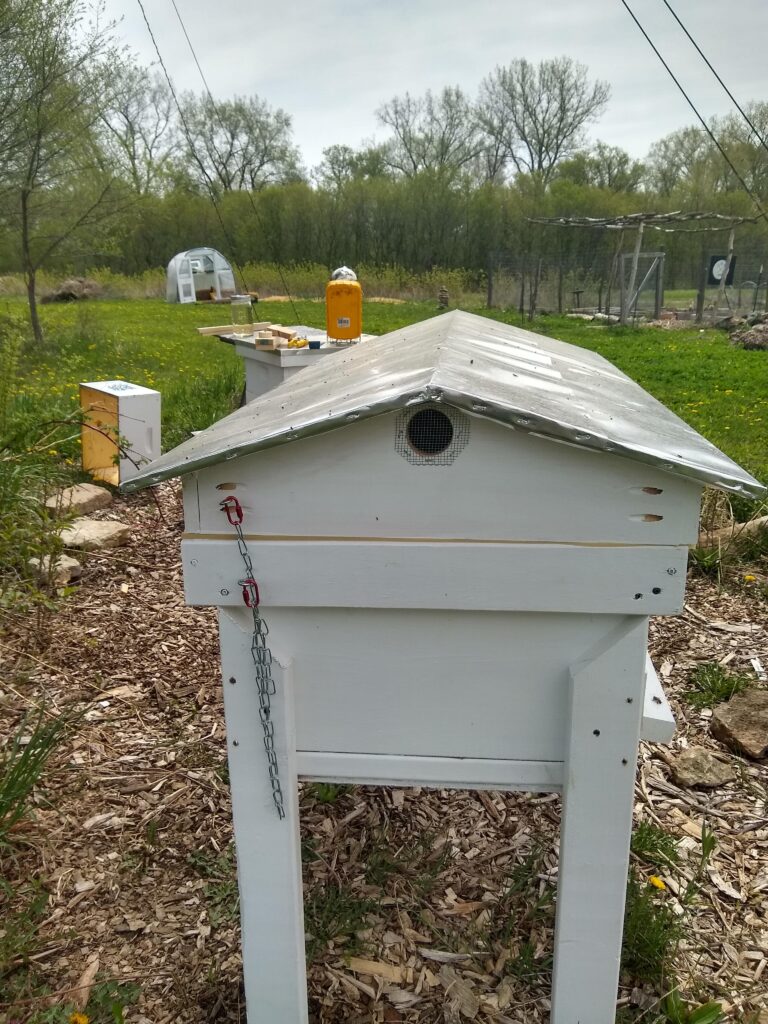
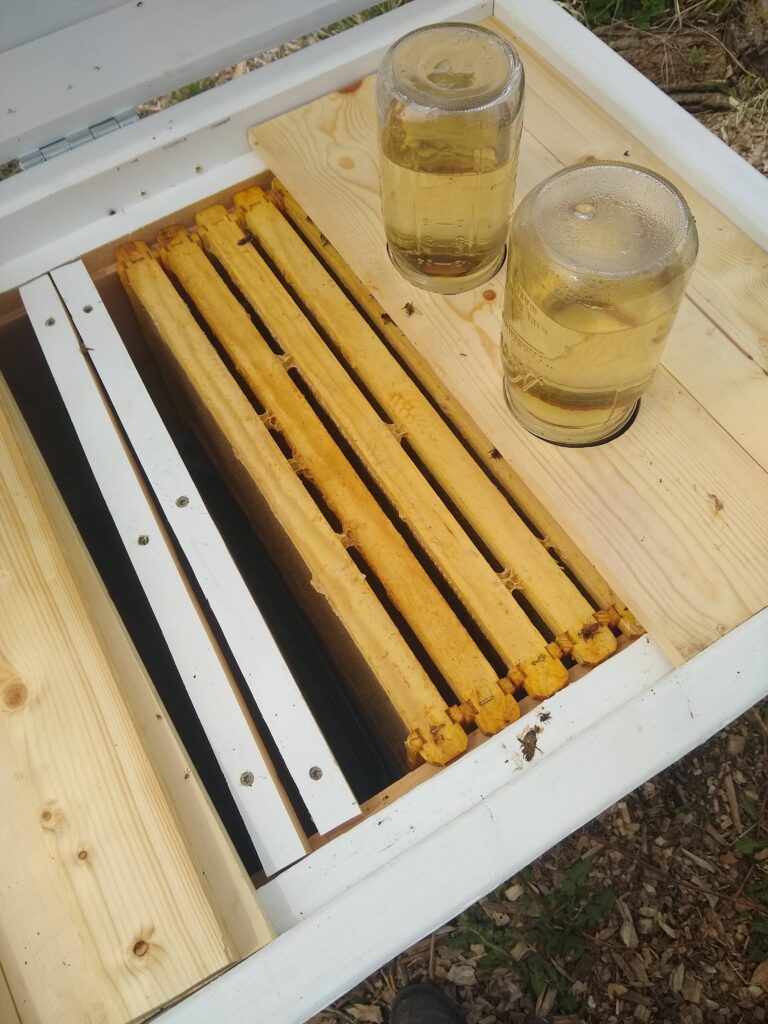
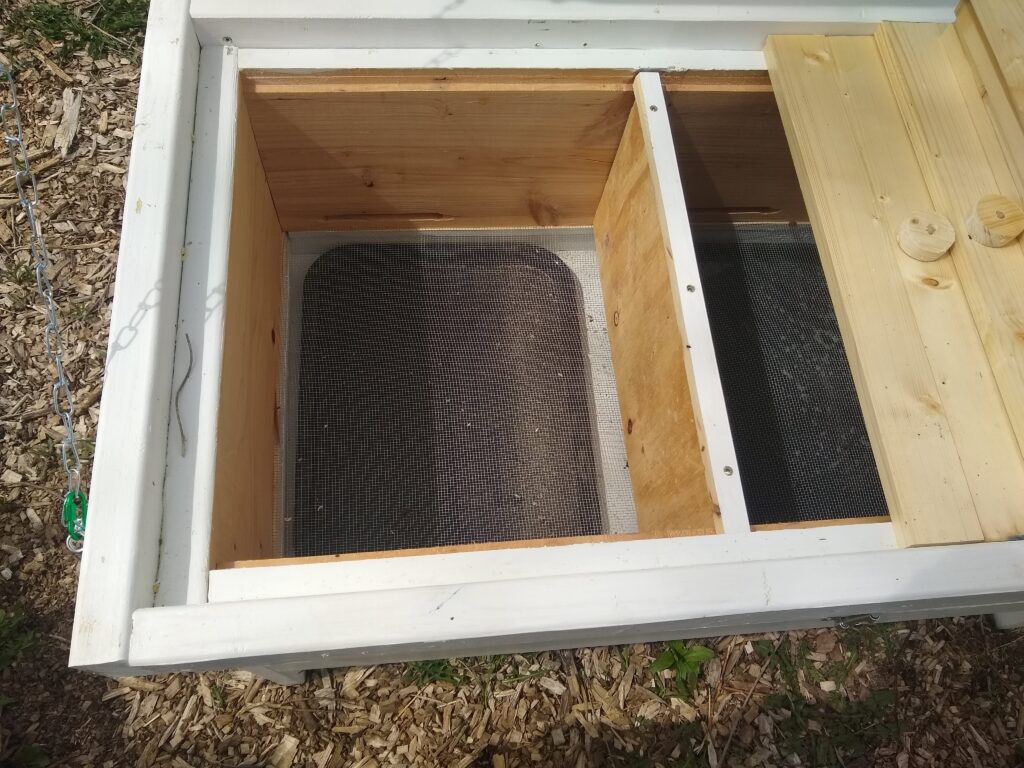
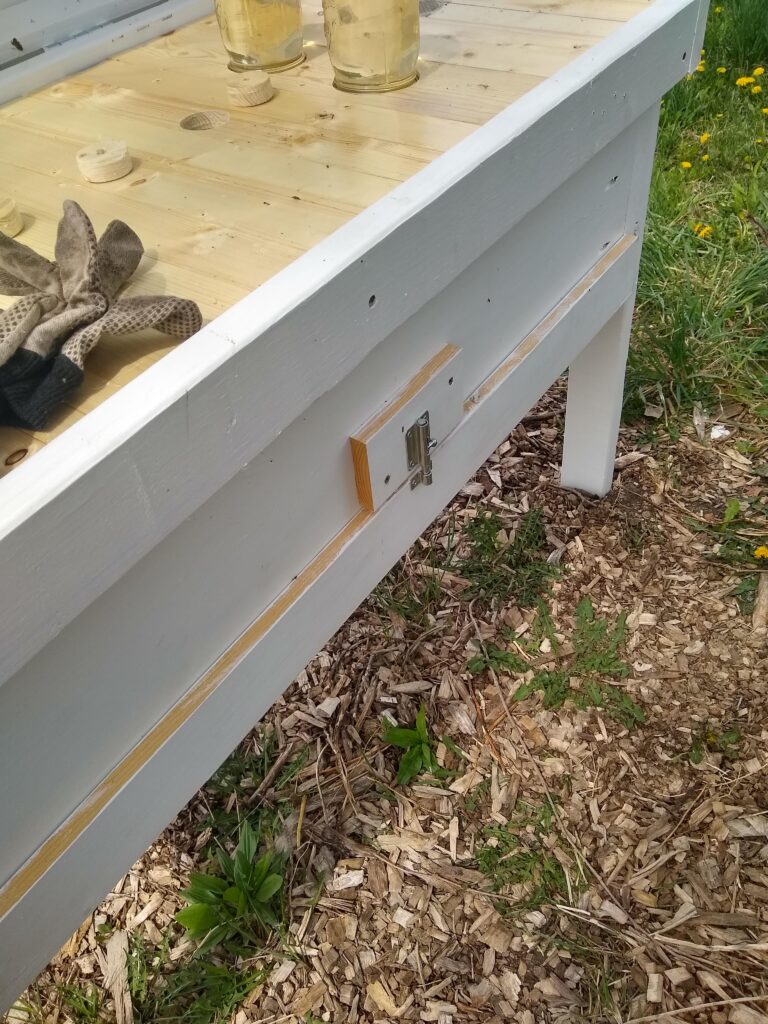
This years 2 lb package has been installed. The queen was added and kept in a queen cage to make sure they accepted her. Two days later the queen was released. They are now out collecting dandelion and wild plum nectar and pollen.